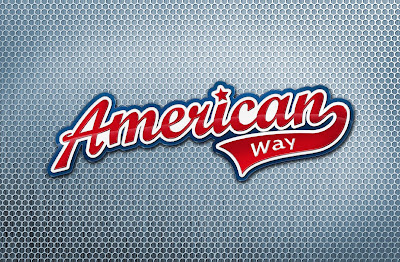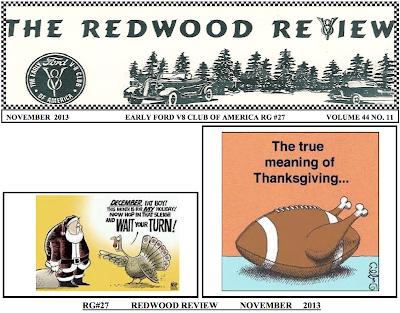Lyda Roberti.
Wednesday, August 31, 2016
Monday, August 29, 2016
Sunday, August 28, 2016
Saturday, August 27, 2016
FAST COMPANY
Back when Charles Schulz died, political cartoonist Signe Wilkinson included one of my Fusco Brothers among other comic strip characters in her tribute to him.
Thursday, August 25, 2016
Monday, August 22, 2016
Friday, August 19, 2016
Thursday, August 18, 2016
Wednesday, August 17, 2016
INTERVIEW: UNIVERSITY OF THE ARTS, 2011
- How did you discover you had a talent for cartooning?
- How did your career unfold?
- What do you enjoy most about your job, your career?
- What does your workspace look like? (photo)
- What was your greatest success?
- You've worked on many high-profile projects so far in your career, The Fusco Brothers, as well as writing + drawing cartoons for The New Yorker. What are some of your other favorite projects that you've completed in your career and why?
- Describe a typical day of work for you.
- What mediums do you use for your work?
- Do you have a favorite cartoon you’ve drawn?
- Who is your favorite cartoonist?
- What are some common myths about cartoonists?
- Tell us about your education. What did you like and dislike about your cartooning-related education?
- How does a prospective art student assess their skill and aptitude for cartooning?
- How can the reality of cartooning as a career differ from typical expectations?
- What are some of the trends that you see in the field of cartooning which could help students plan for the future?
- What interests you about teaching?
- What will students learn from your class?
- Is there anything else you can tell us about yourself, your career, or the profession that would be interesting or helpful to others aspiring to enter and succeed in cartooning?
Despite the state of the industry right now, cartooning used to be lucrative for those fortunate enough to succeed at it, and it may be again at some point in the future. And as far as creative outlets are concerned, it can be very rewarding on a personal level. Although this might be the wrong century for it, financially, I'm glad to be a cartoonist, creatively speaking. And if someone has a strong interest in pursuing it, I would tell them to do it strictly for their own satisfaction. While there is no guarantee of big bucks, the new "model" may be just around the corner, and you won't be in a position to benefit from that without entering the field in the first place. And in any event, if it's something you enjoy doing, I would say to do it for that reason alone.
Tuesday, August 16, 2016
INTERVIEW: SAN FRANCISCO EXAMINER, 1995
Quirky Fusco brothers return to The City
By Jane Ganahi of the Examiner staff
Sunday, May 7, 1995
If comic strip character "Cathy" has nightmares about blind dates with buffoons, chances are she's dreaming about the Fusco brothers.
The four brothers, who hail from Newark, N.J., have occupied their own strip for the last five years, expanding rapidly to a publishing empire of more than 100 papers in that time. On tap for the next expansion: The Examiner, which begins the cartoon on Monday.
"I'm glad to be appearing again in San Francisco, so it's good news," says creator J.C. Duffy, noting he isn't sure why it was canceled in the Chronicle. "I hear that in their polls it got both strong negative and positive reactions. I know it will never be "Calvin and Hobbs' or "Peanuts,' but the readers are loyal who do like it."
Indeed, other newspapers - among them the Orange County Register and the Philadelphia Daily News - which canceled the strip, soon reinstated it after readers rebelled.
What gets people so excited about the Fuscos? Duffy says he thinks it's because the four brothers are "everymen" - people with whom readers can identify. Topics for their wry discussions include things that come up between people everywhere: The war of the sexes, single life, dysfunctional families.
The commentary is wry, never obvious. The humor is quirky, never slapstick. If you like the subtle sarcasm of David Letterman, you'll like the Fuscos.
In addition, Duffy uses a unique technique - on TV, it's called "breaking the third wall" between the actors and audience. The brothers openly discuss such things as cartoon agents and lampoon standard cartoon visual devices like the balloon thoughts above their heads and the letters "Zzzz" that denotes sleeping.
Duffy, 43, says the brothers are in no way related to him.
"It's not my family. It's a made-up thing. I always wanted to do four goofy guys and a talking animal."
Duffy describes the family thus: "Lance is pretty much the leader; he's the oldest and kind of cynical. Al is the dumb guy, the youngest. Rolf is the ladies' man; he gets the sexist complaints. Lars is the quiet one; he's kind of classy. And Axel is a teenage wolverine, about 16. He's the sanest one, kind of high-minded. He just tolerates the brothers."
Why a wolverine? "I just thought a wolverine is more interesting than a dog. Some people debate which it is, but I like to leave it officially a mystery."
Duffy set the action in Newark because "I wanted it to be an East Coast city that was kind of dark and gloomy." He himself hails from Philadelphia, where he went to art school and still lives. But he thinks he might soon be making a move.
"I'm hoping to spend a lot of my summer in San Francisco; I hate the hot summers back here. I've been threatening to move there for years because I have a lot of good friends out there. It's a great town."
He has an ally in San Francisco - man-about-town and retro-rocker (with the Dinos) Roger Clark, who is collaborating with Duffy on an animated cartoon of the Fuscos. Duffy did the animation and helped write some songs along with Clark, who describes the project as being
"in development."
As much as he loves being a cartoonist, he does admit, "I do get tired of doing the same characters every day. I like them, but sometimes I think if I have to draw this guy's head one more time I'm going to go on a shooting spree. But it's worth it to get it on the page."
Duffy also has created numerous greeting cards and already has published two Fusco Brothers anthologies,
"Meet the Fusco Brothers!" and "Newark and Reality . . . Together Again." Fans take note: His third book comes out this fall, titled "Cruel and Unusual."
Monday, August 15, 2016
INTERVIEW: ORLANDO SENTINAL, 1989
Testing, Testing. . . 'Fusco Brothers': 4 Guys Living On The Far Side
August 21, 1989|By Agnes Torres Al-shibibi, of The Sentinel Staff
Welcome to Fuscoland, where four bumbling losers share a home with a talking dog who thinks he's a wolverine.
Lars, Rolf, Lance and Al Fusco (pronounced FUSS-co) have no luck with women, are really into Leave It To Beaver reruns and order pizza with giblets for Thanksgiving. Axel, their confused pet, goes to school, complains about dog food and sips martinis.
If Dorothy were here, she'd definitely know she wasn't in Kansas anymore.
''The Fusco Brothers'' begins a two-week test run in The Orlando Sentinel today on page C-5. It is the second of five comic strips to be auditioned for readers, who on Sept. 1 will be invited to vote by telephone on whether the Fuscos should take up permanent residence on the comics pages.
''The Fusco Brothers'' had been scheduled for a fall debut nationwide, but plans changed when newspaper editors expressed an interest in the strip as a replacement for the discontinued ''Bloom County.''
About 50 newspapers have picked it up, said syndicate editor Lew Little, including The Washington Post, the San Francisco Chronicle and the New York Daily News.
''Fusco'' creator J.C. Duffy, a 38-year-old bachelor with no siblings - bizarre or otherwise - works out of his home in Philadelphia. He designs greeting cards for Recycled Paper Products Inc., does free-lance illustrations for the Philadelphia Daily News and contributes to the syndicated comic strip ''The New Breed.''
An art-school dropout, Duffy credits Mad magazine with shaping his sense of humor and Gary Larson's ''The Far Side'' with inspiring him to try cartooning.
''I didn't think there was a place for what I did in the comics until I saw 'The Far Side.' It was similar to what I had been doing in my cards, and it made me realize the market was loosening up.''
The Fuscos came to life four years ago, but distributors showed little interest then. Duffy tried again earlier this year, hitting paydirt when he sent samples to Little.
Duffy said he has no idea how he came up with the Fusco brothers, but his career may hold some clues. Before becoming a greeting-card illustrator in 1981, he spent years trying to break into the music business as a rock guitarist. He supported himself with odd jobs. At one point he tended bar. At another he was a welfare case worker.
''I guess this strip is a compilation of everything I was dealing with in my drawings over the years. I get a lot of these things from my own sordid life.''
Sunday, August 14, 2016
Saturday, August 13, 2016
Wednesday, August 10, 2016
Subscribe to:
Posts (Atom)


















































